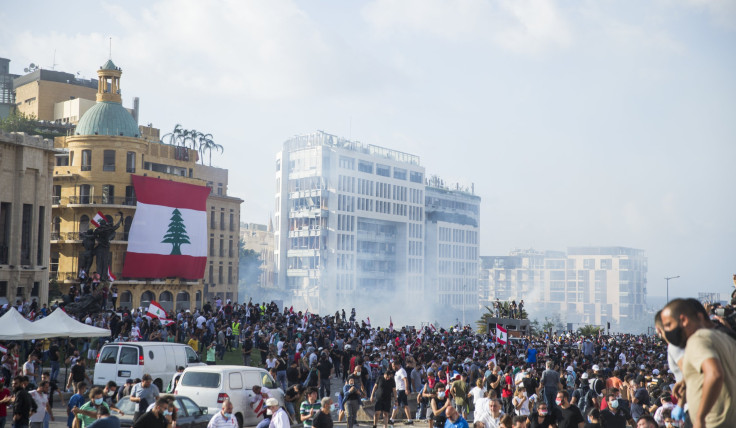Death Toll From Beirut Explosion Rises, Protests Leave More Injured

At least 158 people were killed by Tuesday’s devastating explosion at the port of Beirut, according to the Lebanese health ministry media office. More than 6,000 people were injured and 21 are still reported missing.
Lebanese President Michel Aoun told the press Friday that the blast was either the result of negligence or “external intervention” by some sort of explosive. The explosion is thought to have started with 2,750 tons of ammonium nitrate that was being stored at a warehouse.
Aoun said he asked the French government for satellite imagery to check for any planes that could have dropped a bomb or any missile near the time of the explosions.
More people were injured Saturday as protestors demonstrated against the way the government has handled the explosion. Fifty-five protestors were hospitalized, The National’s Joyce Karam reported.
Second ministry falls to Protestors in #Lebanon : Ministry of Economy downtown Beirut following Foreign ministry
— Joyce Karam (@Joyce_Karam) August 8, 2020
55 protestors hospitalized. Marching continues pic.twitter.com/up7rQOlOHh
Security forces fired tear gas at crowds, who responded by throwing rocks at police. Several protesters wore helmets, gas masks and goggles, prepared for such a response.
Protesters overtook the foreign ministry building in Beirut’s Achrafieh district and people were seen entering the building of the economy ministry. Activists hung symbolic nooses at Beirut’s Martyrs’ Square, aimed at negligent politicians, The Associated Press reports.
It’s estimated that 300,000 people have been left homeless by the explosion in Beirut. More than 6,000 buildings were destroyed and there is between $10 billion and $15 billion in damage, according to Beirut’s governor.
© Copyright IBTimes 2025. All rights reserved.






















